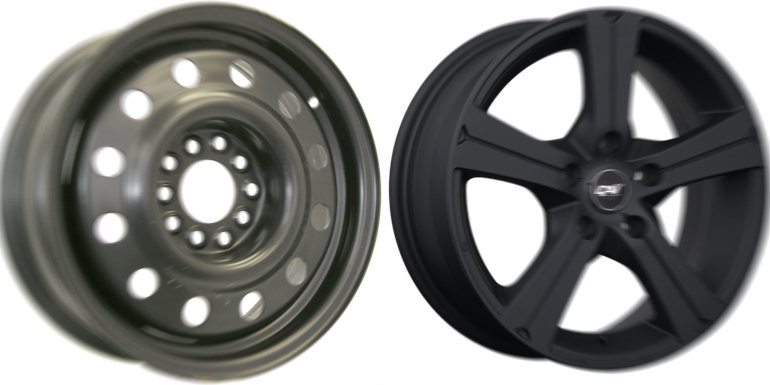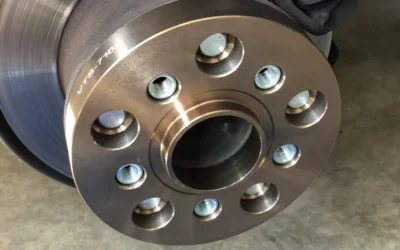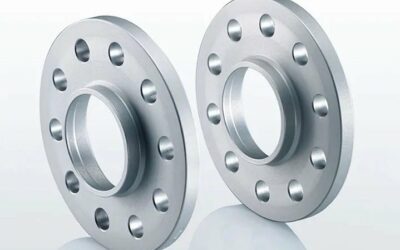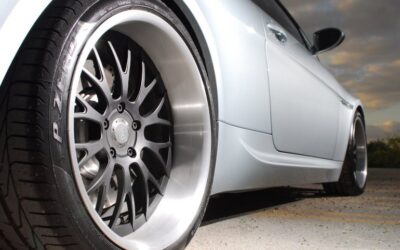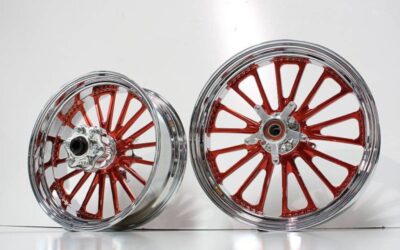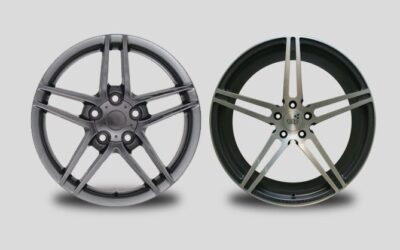Alloy or steel rims, which are better? Both have advantages and disadvantages for different types of driving; but in general those who want beauty and performance want alloys, and those who want tough, inexpensive, workhorses want steels.
Rim Materials
The three basic rim types are:
- steel
- cast aluminum
- forged aluminum
Steel wheels are stamped into shape and then riveted or welded together. The cheapest aluminum wheels are cast, that is, formed by filling molds with molten aluminum and then machining it into shape. Cast materials are brittle and can shatter like glass under forceful impact. Forged aluminum rims hammered into shape use a process that makes a very strong finished product.
There are hundreds of wheels on the automotive market. Most differences among them are cosmetic. Which material makes the best wheel is debatable. Most common wheels are steels or aluminum alloys. Carbon fiber wheels are available but financially unaffordable for most drivers.
Alloy Wheels
Although steel is an alloy (iron + carbon), the term “alloy wheel” is usually referred to wheels made from iron free materials. Alloys are now mostly standard for their cosmetic and performance superiorities. Aluminum alloys can be cast and worked in many more forms and shapes than can steels to give cars more unique looks and owners more chances for customized designs. Aluminum/nickel alloys, much lighter than steels, make performance more agile and acceleration faster. Cars on alloys generally outperform those on steels.
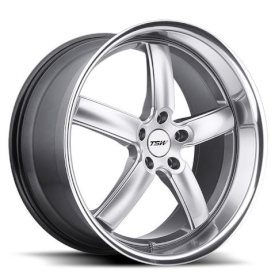
One-piece cast alloys are the most usual. Up to a third lighter than steels, resistant to bending, and moderately priced, they are fine for virtually all uses. Two-piece alloys have cast centers and spun rims held together by welds, rivets, even nuts and bolts. Their construction makes these wheels strong and lightweight, but they bend easily and repairs are difficult. Forged aluminum alloys are stronger than steels, lighter than most cast alloys, and the most expensive.
Carbon fiber wheels are very rare. Extremely light in weight, less than half that of steels of the same size, they may break if not constructed specially for off-road use.
Alloys bend and buckle more easily than do steels under impacts and will crack if stressed too far. Pliability versus brittleness depends on the proportion of nickel to aluminum in the alloy. Nickel adds weight and makes alloys stiffer and more brittle. Less nickel makes a lighter wheel that bends more easily. Pressure forging also affects durability.
Aluminum wheels are available in far more sizes and designs and are superior in performance and ride quality. Aluminum wheels are lighter, they have less inertia, and they respond to road conditions more quickly. Lighter wheels also improve fuel economy in needing less energy to move them.
Steel Wheels
Most wheels are steels, a stamped inner part and a rolled outer rim welded together. The construction is strong, easy to maintain and repair, and cheap to fabricate. A disadvantage of steels is the effect of added weight on performance. The wheel is a dynamic part of the vehicle, and cars on alloys accelerate faster and stop sooner.
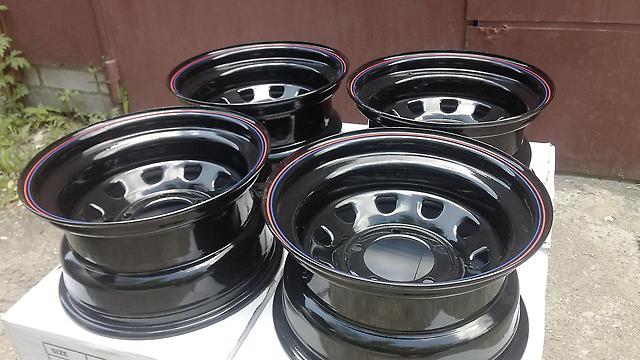
The weight of car wheels, tires, and brakes is unsprung, not buoyed or cushioned by the suspension springs. Unsprung weight affects car handling much more than would the same amount of weight above the springs, and even a small amount of added weight can have undesirable effects. But steels are stronger, do not bend easily, and almost never crack.
Installing steels on a car that had alloys adds unsprung weight that retards acceleration, hampers agility, lowers the center of gravity, and generally dampens performance. In winter driving, however, these effects may be advantageous. Heavier wheels give tires added traction in the snow. (need more traction in winter conditions?
Steels are typically 16 inches or less in diameter. There are a very few 17-inch steels but no known 18-inchers. Eighteen-inch steels would be no doubt extremely and impractically heavy.
Steels are usually 75 – 80 percent less expensive than are alloys, making them economical spares and inexpensive replacements for wheels damaged beyond repair.
Despite some contrary claims, steels are far stronger than are any aluminum alloys as a wheel material, especially cast alloys. Aluminum fatigues very quickly after repeated loads, but steels endure almost indefinitely. Steels can sustain a blow, bounce back into shape, and be repaired if dented. Steels are about a third heavier but cost about half or a third as much as aluminum. Low price and high durability combined with low maintenance cost make steels favored for most uses as the more practical material.
Summary
Alloys are the clear choice when performance or appearance is what the driver wants. Steels are generally better for all-business, no-nonsense daily drivers with cars not made to compete in auto shows or races. They may be most useful as an extra set of winter wheels (less spinning due extra weight, hydrosol damage from winter road maintance, etc.).

